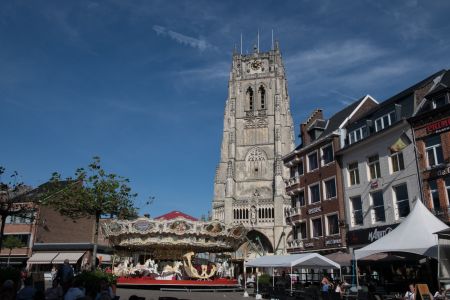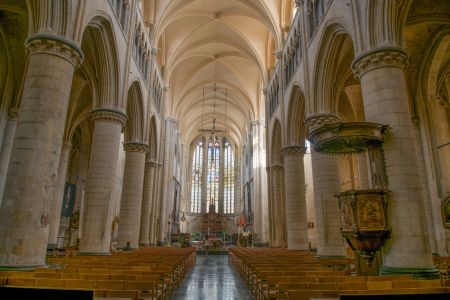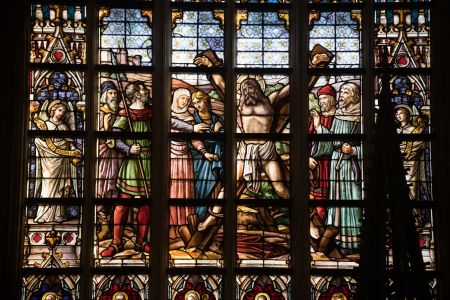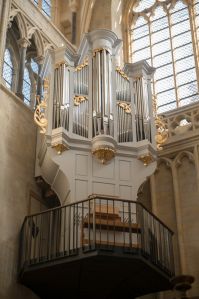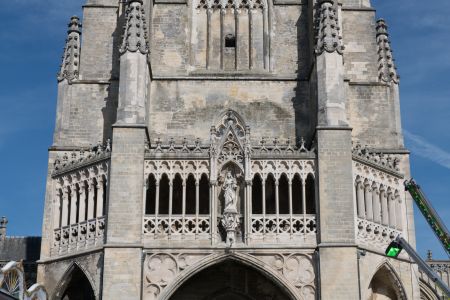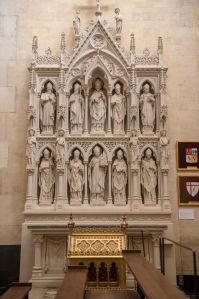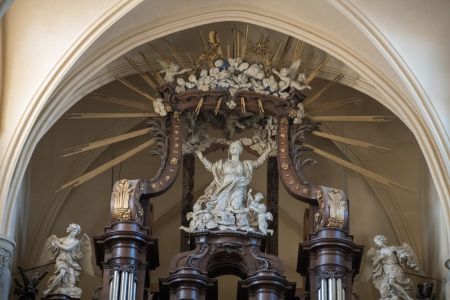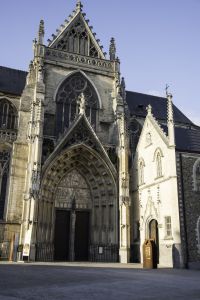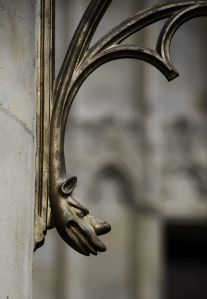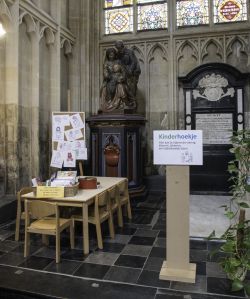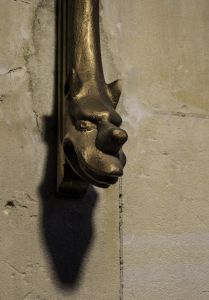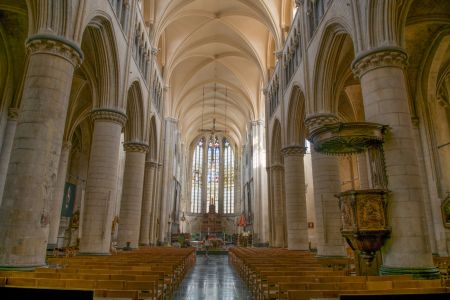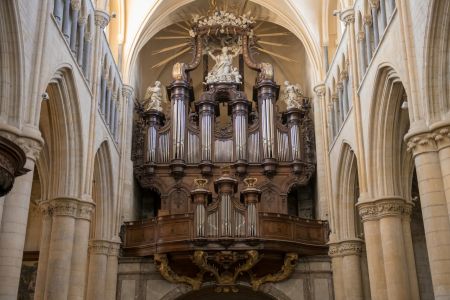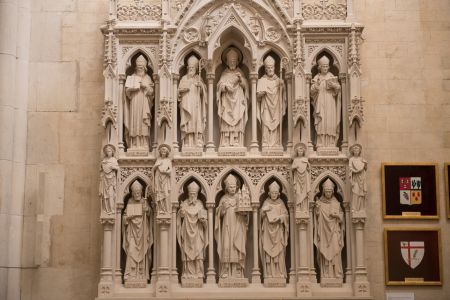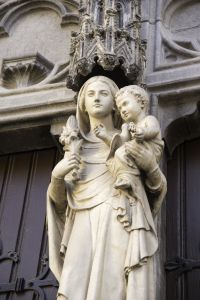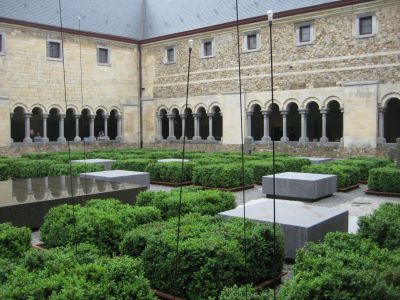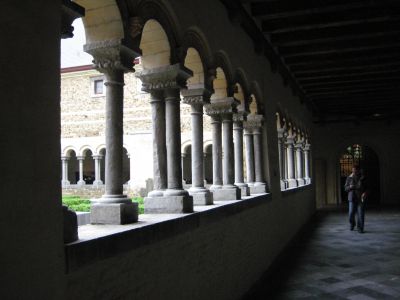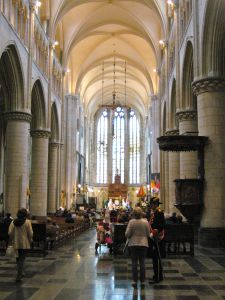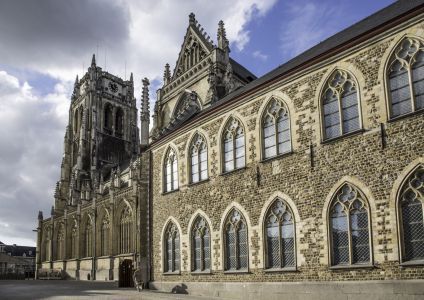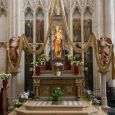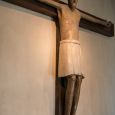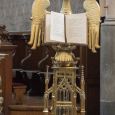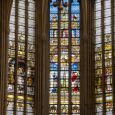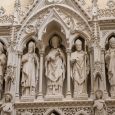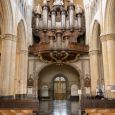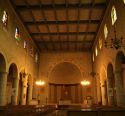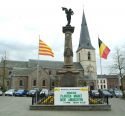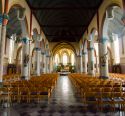Basilica | 1254 | Gothic | Catholic Church




Map
Opening hours
01 January - 31 December
Mon 8.30 - 17.00
Tue 8.30 - 17.00
Wed 8.30 - 17.00
Thu 8.30 - 17.00
Fri 8.30 - 17.00
Sat 8.30 - 17.00
Sun 8.30 - 17.00
Guided tour
Religious offices
Description
In the 9th century the former church got the status of chapter church. The chapter was for many centuries the most powerful economic and administrative player in Tongeren. In 1240 it was decided to build a new Gothic church after the Romanesque church was destroyed. This became a three-aisled cross basilica with an extended choir to provide space for the many canons and clergy. The Romanesque cloister (12th century) of the chapter was preserved.
A transept and a massive west tower were added, initially intended as a belfry. The spire was not finished until 1544. Already in 1598 the tower burned down. In 1677, more than eighty percent of Tongres was burnt down by the French king, including the church. The church tower has been given a new spire several times. The model of the last attempt (c. 1850-1875) was erected in the church, but never decorated the tower. Since 1999, the belfry has been recognised as a UNESCO World Heritage Site.
During a major restoration at the end of the 19th century, neo-Gothic alterations were made to the church. Since 1967, a new restoration campaign has been launched, which will be decided in 2026. The final phases include the opening up of the tower (planned 2022), the roofs, the choir facades and the stained glass windows of the choir (end planned ca. 2026).
The main altar bears a retable about the life of Our Lady (circa 1500-1520). Oak choir stalls, six confessionals and the pulpit date from the 17th and 18th centuries. The eagle lectern and the Easter candlestick, both by Johannes Joses from Dinant are in brass (1372). The numerous statues in polychrome wood include Christ on the cross, Ottoons (2nd half of the 10th century), a Pieta (circa 1380, restored 1953), and a Christ on the cold stone (1530). The miraculous statue of Our Lady's Cause of Our Happiness dates from 1479. The mural on the fourth northern column depicts Saint Peter (early 15th century), the one in the last southern side chapel depicts Saint Egidius (circa 1525). The former brass choir is now under the rood screen. The monumental Le Picard organ (1750) and the choir organ (with core of the 16th-17th centuries) testify to the rich musical life in the basilica.
On 20 February 1931, Pope Pius XI raised the church to basilica status. In 2018 the Teseum was opened in the former chapter house and Romanesque cloister (circa 1150), where the very rich church treasure is displayed. Under the basilica you can visit the archaeological site. It bears witness to the rich Roman and religious past of the city of Tongeren.
The church is a stop on the pilgrimage route to Compostella. Pilgrims can ask for a stamp and visit the relic of St. James.
KIKIRPA : Photo-library online
Photos
Media
Remarkable elements
Statue Causa Nostrae Laetitiae
Tongeren is called "In Ecclesia Tungrensi prima cis Alpes B.M.V. consecrata Miraculis clara invocatur", the oldest place above the Alps dedicated to Mary. On 22 June 1479, the Archbrotherhood of Our Lady, founded at the beginning of the 14th century, commissioned the carving of a new image of Our Lady. The walnut statue, 1.60 metres in size, is the work of an unknown master. Various miracles are attributed to it. Every 7 years the statue "Causa Nostrae Laetitiae" (Cause of our Joy) is worn during the coronation celebrations around the city.
Crucifix Jesus Christ
This crucifix in the entrance portal on the south side (Teseum-Museumplein) dates from around 975. A well-preserved Ottoons work of art of this nature is a great rarity in Europe. It shows us the soft, stilled, dead Christ. The forms are stylized, but through this schematic art a monumental power of expression manifests itself. An atmosphere of glory and peace radiates from the figure of Christ. The elongated face has a wonderful expressiveness.
In the adjoining treasury, the Teseum, there is a Christhead from the same period here, depicted alive, majestically, mystically. Together they show the double nature: God and man.
Dinanderie, Eagle-lettner and Easter candlestick
On either side of the service altar there are, next to the license plates of the basilica, to the right next to the conopeum a lectern carried by an eagle and to the left next to the tintinnabulum an Easter candlestick almost 3 meters high. They date from 1372 and are signed by Jean Josès. The Meuse valley was already known in Roman times for the production of yellow brass, a copper-zinc alloy. Since the 12th century the brass products around the centre of Dinant have enjoyed a monopoly position and we find works of art all over Europe. The two candlesticks next to the lectern date from the end of the sixteenth century.
Historical stained-glass windows - Marian retable
The central stained-glass windows behind the main altar with the Marian retable (Antwerp, ca 1500) date from the middle of the sixteenth century. The monumental stained-glass window is conceived as a triptych. Central is a calvary depicted. Christ on the cross with next to him his mother Mary and the apostle Joannes. Both side windows on the left contain images of Mary, first together with Saint Maternus and Saint Servatius, the first and last bishop of Tongres and on the far left with some saints. On the right side are first the 4 fathers of the church and on the far right an image of Virgin and Child with Saint Anne, with some saints.
Bishops Altar
The bishops' altar is a product of the neo-Gothic renovations at the end of the 19th century. It contains 10 statues of the 10 bishops of Tongeren between 275 and 384. In the archaeological crypt under the basilica remains of the bishop's church of Saint Servatius (342-384) have been found. The larger statue in the middle below is St. Maternus. He founded the diocese of Tongeren around 275. He was also bishop of Trier and later of Cologne, hence the 3 churches he carries. Saint Servatius, in the middle above, has the key in his hands that Saint Peter would have given him.
Le Picard Organ
The monumental Le Picard organ in the back of the basilica dates from 1750. A strong musical culture lived in the basilica. After studying music manuscripts from our church, the genesis of the Flemish polyphony could be brought forward by 50 years. This is shown in the treasury. The organ is played by many organists from all over the world. In 2014 a new organ was added in the transept. This contains a core from the 16th century and a register with date 17 Augst 1661.
In the spring and summer months there is an "organ4U moment" every Saturday at 4 a.m. on which various organists perform a freely accessible organ recital.



